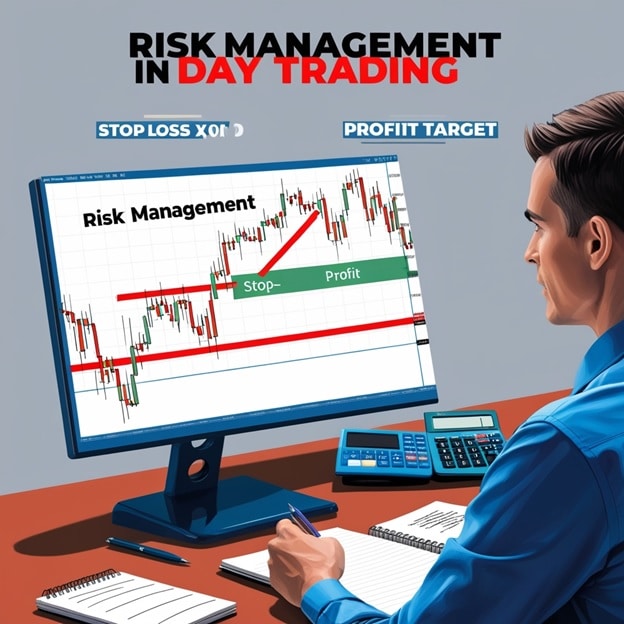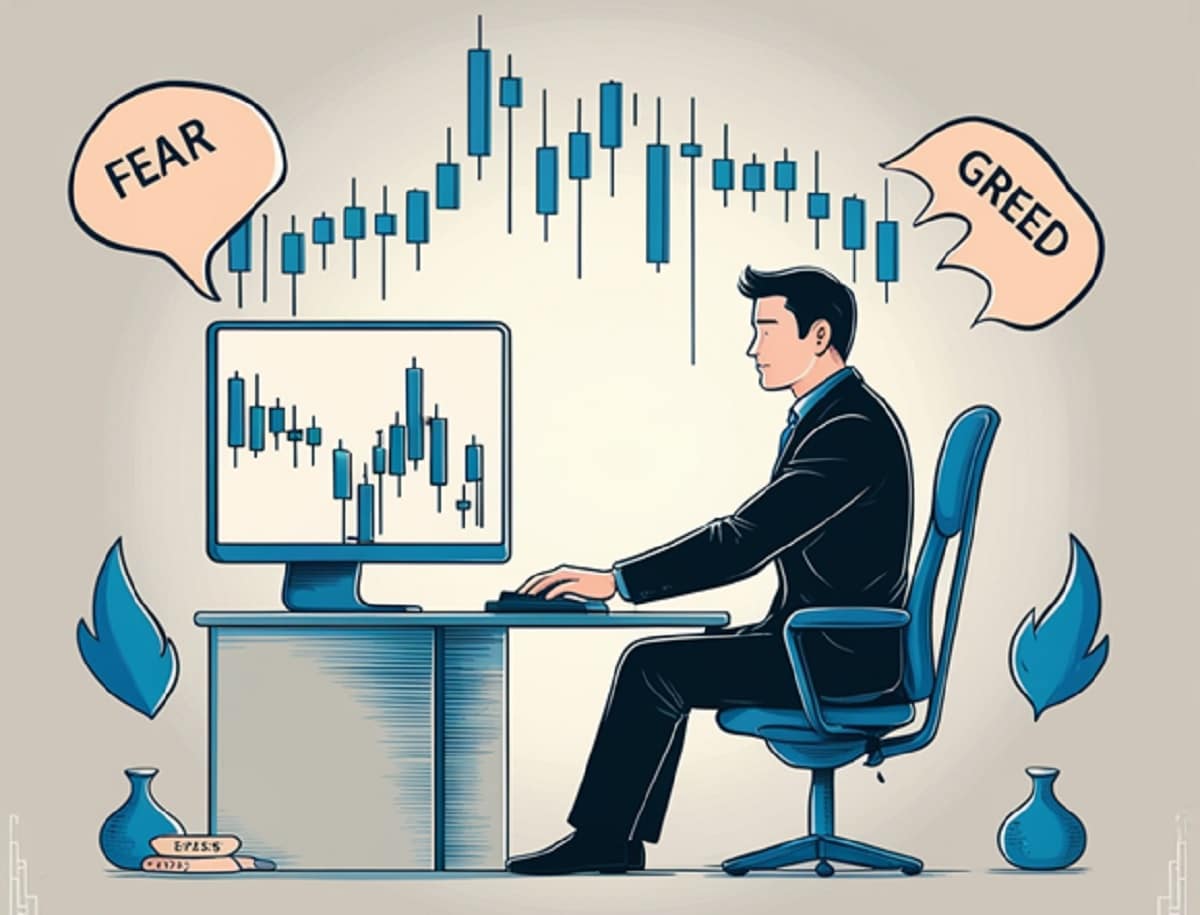New traders often lose money fast. Follow these 7 Day Trading Rules to stay safe, make smart moves, and build confidence early.
Introduction
The day trading process appears fantastic with its rapid earnings and fast market trades and market intensity appeal. The world of day trading creates instant confusion and expenses from mistakes when new traders begin. The majority of novice traders enter the market without grasping fundamental concepts that result in losing their invested funds.
Developing the correct group of Day Trading Rules stands as essential education for traders.
The survival tools function as mandatory procedures instead of advisory recommendations. The rules provide traders with enhanced intelligence to manage risks better while escalating their market confidence in fast-moving markets. The fundamental rules for trading stocks, forex and crypto determine who achieves success along with who fails in the market.
The following guide presents seven fundamental Day Trading rules that all beginners need to follow to stay away from typical errors and launch their trading practice properly.
1. Always Use a Trading Plan
A constructively formulated trading plan stands as the fundamental rule for starting Day Trading. Doing trades by instinct or picking random tips leads to quick trading losses. Trading with a correctly structured plan allows you to maintain focus while remaining disciplined with anticipation for multiple market conditions.
Your trading plan should include:
- Entry and exit strategies – Know exactly when you will enter and exit a trade.
- Risk management – Set a stop-loss and know how much you’re willing to lose per trade.
- Profit targets – Decide how much profit is enough before exiting.
Traders would experience emotional takeover when they lack market planning. Before making an investment you should control your fear and greed because these emotions drive you to take actions that contradict market principles. The distinction between a genuine trader and a gambler emerges through implementation of this guideline.
A trading map functions like a manual that steers every action toward meaningful direction preventing any confusion during market chaos. Experienced traders already position themselves in front of beginners when they maintain their plan while learning from experience.
2. Set Realistic Goals

People who overlook Day Trading Rules neglect to establish realistic goals that they can realistically achieve. What most new investors anticipate is that they can easily double their trading capital in a single session. Such an approach produces both letdowns in addition to dangerous financial choices motivated by uncontrolled desire.
Consistent performance represents success in day trading rather than searching for large profit margins. Proper execution of daily 1% gains leads to substantial total accumulation over time. Using small measurable targets provides you both clarity on what you aim to achieve as well as tracking of your progress along with protection against impulse deals.
The process for establishing practical targets includes these steps:
- Focus on the process: The goal spans beyond profits to include trading journal record-keeping and keeping to your strategy plan and managing trading risks.
- Understand your capital: When dealing with a $500 investment amount you should not attempt to generate daily profits totaling $200. That’s unrealistic and unsustainable.
- Expect losses: During trading there will be both winning and losing trade results. Your goals should cover both mistake-learning and the development of new competencies.
Establishing realistic expectations helps you develop better self-confidence while preventing exhaustion while establishing a winning outlook for sustainable day trading success.
3. Manage Your Risk

Risk management stands as the most crucial Day Trading Rule among all other rules. A poorly managed risk approach can destroy your trading account even when your trading strategy remains effective.
Any winning trader realizes capital protection stands as their primary rule. The goal of your career transcends profit generation since it needs survival to develop professional expertise.
Use these steps to handle risk at a professional level:
- Use stop-loss orders: Every trade should start with a clear determination of loss limit before entering. Every investment needs a stop-loss to help minimize emotional trading as well as extreme losses.
- Each trading bet must represent only 1 to 2 percent of your total investment funds: You maintain a functioning trading position despite losing some trades because of this risk management practice.
- Avoid overleveraging: Using leverage to gain greater profits creates stronger losses simultaneously. Initiate your operations cautiously before considering expansion.
The distinction between trading as a business and risk-taking as gambling depends on risk management skills. When you reduce your maximum possible loss then average trades will turn into profitable results throughout time. Townsend makes loss-control an obligatory element for all traders embarking on their trading path.
4. Stay Updated with Market News
Being in the know represents one of the least recognized rules in Day Trading. Trades in financial markets completely abstain from chaotic behaviors because public news and global events generate extensive price movements. Market participants without global outlook might end up in positions that reverse direction without their knowledge.
Market volatility becomes severe when the exchange makes an interest rate announcement or companies release economic reports and earnings statements. An uneducated trader will likely make wrong entry decisions during market movements.
Here’s how to stay ahead:
- Use reliable financial news sources like Bloomberg, CNBC, or ForexFactory.
- Follow an economic calendar to know when major data releases are scheduled.
- Set alerts or notifications for breaking market news or relevant updates.
Conducting this daily routine will let you trade with contextual information instead of mere guesswork. According to the Day Trading Rules people must react to market movements instead of allowing it to take control.
5. Control Emotions While Trading
The greatest trading techniques will fail due to uncontrollable emotions. The principle rule of day trading involves managing your emotional responses particularly your fear and greed.
Fresh traders usually enter a state of panic when their trades reverse direction yet they become excessively confident after winning a few times. The circumstances will drive some traders to overtrade or perform revenge trading followed by complete abandonment of their original strategy.
Here are tips to keep emotions in check:
- Follow your trading plan by not allowing emotions to control logical decision-making.
- Business Deals Include Losses Which Every Trader Experiences Eventually.
- After emotional trading takes place you should take a break to clear your mental space.
- Keep away from trading during times of stress because mental condition directly impacts your trading choices.
The goal in trading is not achieving absolute correctness but remaining dependable throughout your decisions. The mastery of emotional control needs significant time and practice as well as self-awareness to understand its application according to Day Trading Rules.
6. Stick to Your Trading Hours
Trading all hours of the day and every trading day remains one of the principal errors that new traders commit even though extended duration lacks a direct correlation with increased earnings. An effective Day Trading Rule that smart traders follow involves selecting particular trading hours to adhere to.
Trading participation remains unequal throughout the duration of each daily session. The trading session becomes most volatile with the maximum trading volume during the peak hours that happen at the beginning and end of the day. That’s when serious opportunities arise.
The following benefits explain why traders need to maintain specific trading periods.
- The continuous presence of screens causes people to experience mental exhaustion resulting in bad choices.
- The practice of setting specific time limits enhances your attention span as well as prepares you mentally for work in that period.
- Trading with restraint becomes possible when trading time is limited because opportunities to follow emotions remain reduced.
Trade during 1–3 peak hours rather than attempting the entire market session. Your performance will rise and your losses will decrease when you implement disciplined trading which makes this rule among the smartest Day Trading Rules to follow.
7. Keep a Trading Journal
Designing a refined and comprehensive trading journal represents one excellent approach to enhance your trading abilities through mistake analysis. Multiple professionals dealing in trading use this method as an essential part of their trading approach. The Day Trading Rule enables you to monitor your trading development so you can identify trends that lead to enhanced future choices.
What to include in your trading journal:
- Document both your trades’ entry and exit points with their related motivation factors.
- The document should state wins and losses along with trade monetary values.
- During each trade note your emotional state since it will include feelings ranging from fear to greed and excitement.
- The analysis should explore both successful and unsuccessful strategies.
Regular review of your journal reveals repeated mistakes which help you enhance your strategy to prevent mistakes from repeating themselves. Using a journal as a tool enables traders to develop stronger competencies while driving up their profitability levels.
A trading journal stands as a fundamental yet highly effective Day Trading Rule to achieve long-term success. All trades lead to growth through analysis of successful and unsuccessful ventures.
Frequently Asked Questions (FAQs)
What is the best time to start day trading?
Warriors should start their day trading career when they possess complete readiness through effective strategies and risk controls together with complete emotional regulation ability. The appropriate starting point is after investing enough time to learn along with practicing and observing your development before making investments with actual funds.
How much capital do I need to start day trading?
There’s no one-size-fits-all answer. Your investment size depends on what trading approach you use and which market you want to join. The common starting capital for stock trading amounts to between $500 and $1,000 but remember to use caution when handling risks based on your investment size.
Can I trade full-time as a beginner?
A beginner should begin their trading career on a part-time basis. Starting full-time trading without gaining enough experience exposes you to high risks. You should first learn and test your strategies as well as develop discipline before taking full-time trading seriously.
How do I avoid emotional trading?
Novice traders commonly encounter difficulties because of their unmanageable emotions in trading. Beginners should maintain their trading plan and install stop-loss orders while preventing themselves from trading more than necessary. Trading success through proper emotional decision-making can be achieved by using breaks and journaling trades and studying the lessons learned from each deal.
What is the importance of a stop-loss order?
A stop-loss order triggers the automatic exit from a trade once the price level drops below its specified point. The stop-loss strategy allows traders to protect their investment from losses that exceed their set risk tolerance. Day trading risk management depends heavily on having stop-loss orders.
































